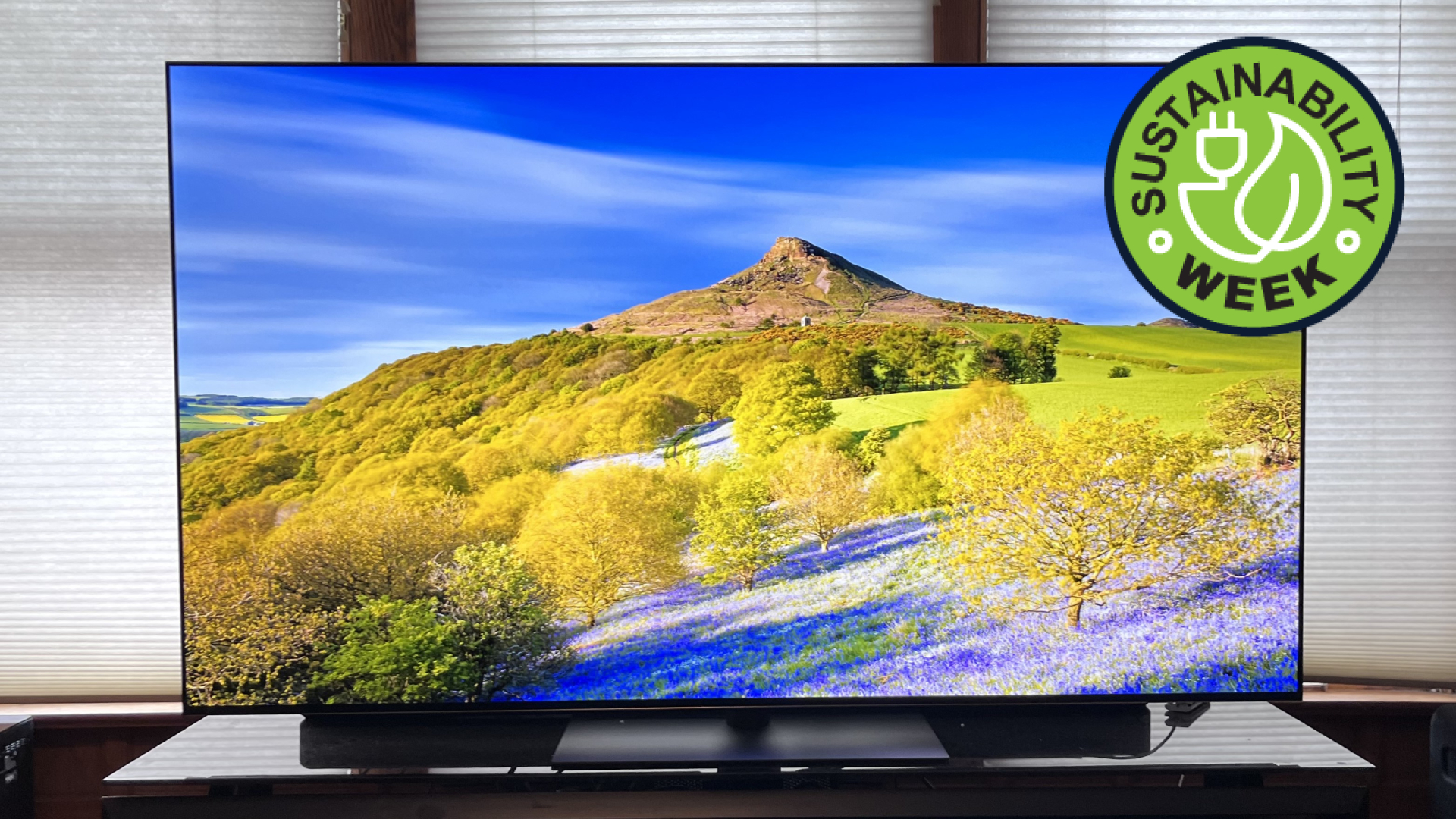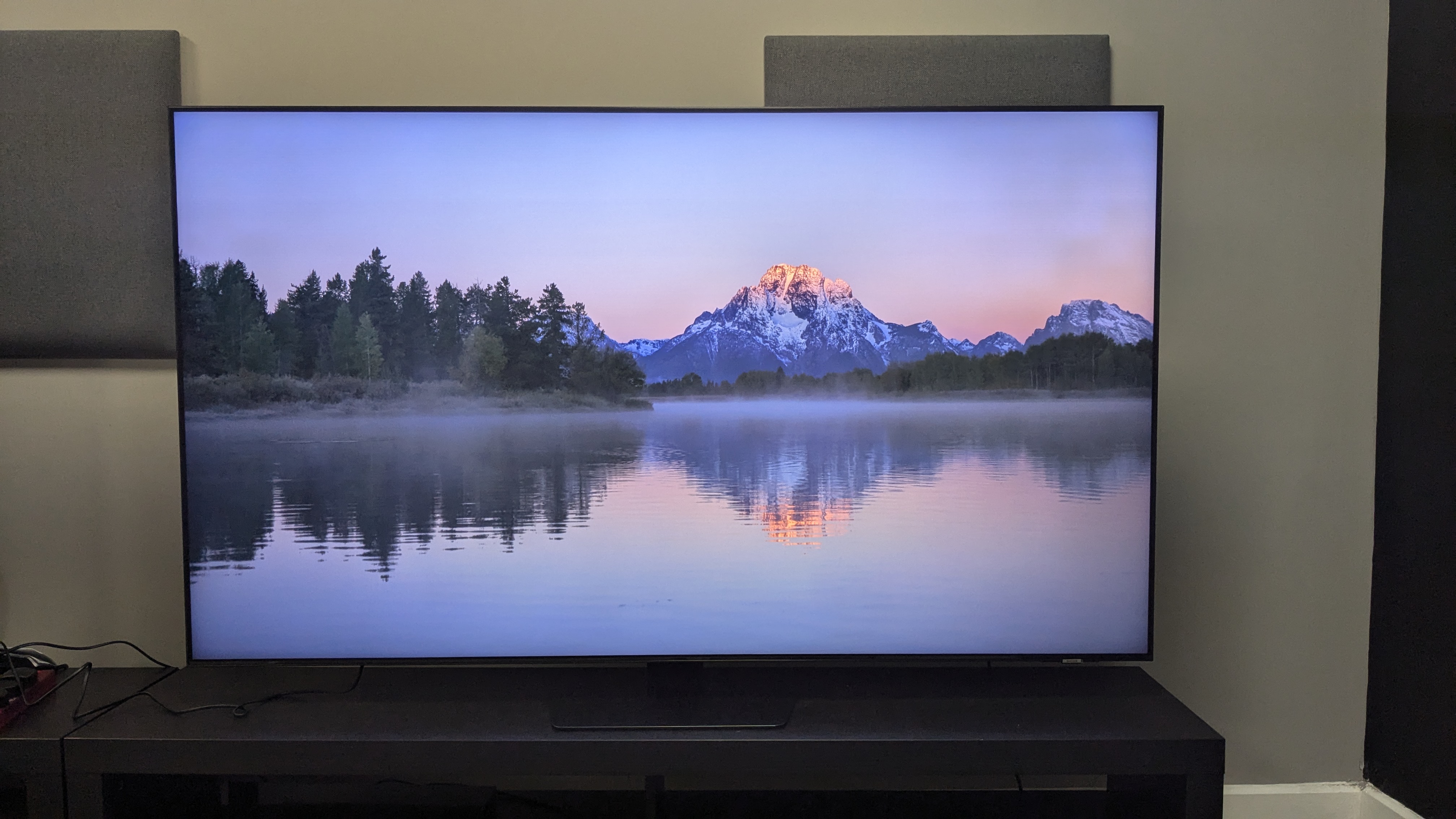OLED, mini-LED, LED – which TV type is best for energy efficiency?
Green screen considerations

This article is part of a series of sustainability-themed articles we're running to observe Earth Day 2025 and promote more sustainable practices. Check out all of our Sustainability Week 2025 content.
Modern TVs are getting brighter than ever, and that, along with extra tens of inches and packed pixels, means increased power consumption.
As TVs now regularly reach into the 75-inch and 85-inch or larger brackets, energy efficiency has become more and more important, both to keep electricity bills down and to help lessen the burden on the planet.
Whether you’re looking at one of the best OLED TVs, a feature-packed mini-LED TV, or a more affordable regular LED model, the underlying technology can make a big difference to not just how good movies look, but how much electricity your TV draws.
To help you choose the best TV, we’re taking a look at the power efficiency of OLED, mini-LED, and LED TVs. These represent the three main TV display types out there in 2025, and all of them work in different ways.
How does each TV type impact usage, and what effect does HDR have?

While all modern TVs aim to deliver bright, punchy images, the way they produce light has an impact on energy use.
Most regular LED TVs – technically, LED-lit LCDs – use a backlight that’s always on. Whether you're watching a dark thriller or a cartoon, the panel consumes roughly the same amount of power because the backlight shines through the LCD panel regardless of the image content.
Mini-LED improves on this display type by shrinking the size of the LEDs to increase the total number of them. One benefit here is increased brightness, and another is the potential for more local dimming zones, where the backlight gets selectively dimmed in darker areas of the screen and boosted in brighter areas.
OLED, meanwhile, takes a different approach. It’s a self-emissive technology, with each pixel lighting up independently, meaning power is only used where it's needed – so in dark scenes, much of the screen is effectively switched off. The result? Outstanding contrast and the potential for lower energy consumption.
Get daily insight, inspiration and deals in your inbox
Sign up for breaking news, reviews, opinion, top tech deals, and more.
However, as an MDPI study found, OLED power use increases sharply with brightness, often exceeding mini-LED when displaying content at high luminance levels.
And then there's high dynamic range (HDR). High dynamic range formats such as Dolby Vision and HDR10+ push TVs to deliver intense peak brightness, especially in highlights. OLEDs, once less power hungry, are now competing with mini-LED TVs on brightness – and that comes at an energy cost.
How much energy does each TV display type use?

When it comes to day-to-day energy consumption, real-world testing shows just how much panel type, brightness, and content type affect a TV’s power draw.
Independent data from RTINGS.com reveals that OLED TVs can consume more power than LED models when playing bright HDR content, especially in a vivid picture mode or when set to maximum brightness. (RTINGS’ website has a neat slider to show how much specific screen sizes use, including over what duration, and the data is from 2021.)
However, that scenario flips in darker scenes or when watching standard dynamic range (SDR) content. OLED’s self-emissive pixels mean unused areas stay off, cutting down energy usage. In contrast, LED and mini-LED TVs have their backlights running regardless of what’s on screen, although models with local dimming dim specific zones to reduce the draw.
According to these calculations, a 75-inch LED TV, used for five hours per day with average energy costs, consumes 131W of power and costs $179.90 per year, while an equivalent OLED TV uses 134W and costs $182.73. Of course, these prices are mostly indicative and will likely be higher now that energy prices have risen.
Changing TV energy consumption over time
TV power consumption isn’t static – it can shift over the lifetime of the panel.
OLEDs, for example, naturally lose luminance over time due to organic pixel wear, and while this gradual dimming might lead to slightly lower power use, it can also prompt users to raise brightness settings to compensate, canceling out the savings.
Mini-LED and regular LED TVs don’t degrade in the same way, and their peak brightness tends to remain stable, which is a plus over the lifetime of a TV.
Smart features also contribute to overall energy use. Many modern TVs draw between 1–3 watts in standby mode, especially if they support voice assistants, automatic updates, or motion-sensing features. These background processes might seem minor, but they add up over months (or years) of idle time.
How can I cut my TV energy consumption?
Whatever screen type you choose, there are simple ways to cut your TV’s power consumption.
The most effective method is to use a built-in energy-saving or eco mode, which typically caps peak brightness and optimizes power draw based on ambient lighting conditions. But note that such features can substantially dim pictures, which may negatively affect picture quality.
Disabling AI features like always-on voice assistants, automatic content recognition, and quick-start can further reduce background energy use, particularly when the TV is idle or in standby. And if your TV supports ambient light sensors, turning them on –something that happens automatically when you enable a picture mode such as Dolby Vision IQ – allows the brightness to scale automatically to your room conditions.
For the best results, consider watching in a dim or dark room if possible, where a lower brightness setting can still deliver a satisfying picture.
Smaller screen sizes also consume significantly less energy overall, so scaling back just a few inches can have a noticeable impact on your electricity bill.
What energy labels don’t tell you

Energy efficiency labels – whether in the EU or the US – are based on standardised tests using factory settings and SDR content. But in practice, most people watch a mix of HDR movies, streamed content, and sports in brighter modes, all of which draw more power than the label might suggest.
A TV rated as “A” or “B” may use significantly more electricity if it’s running in vivid mode at full brightness, for example.
Which is the best TV brand for energy efficiency?
While display type plays a major role, TV brands are also investing in energy-saving features to further cut power use. LG, for example, promotes the OLED Evo panels found in models like the LG C4 and LG G4 as more efficient thanks to new materials and heat dissipation tech.
Samsung's Neo QLED mini-LED TVs, like the Samsung QN90D, use AI-based Adaptive Picture settings and Energy Saving Modes to lower power draw based on ambient lighting and usage patterns.
While these features are nice to have, and modern TVs are much better for energy consumption than older models, the fundamental reality remains that larger screens equal higher power consumption, compounded by content types like HDR.
In reality, the differences between OLED, mini-LED, and LED are likely to be small for most TV users, but newer display types like OLED and mini-LED are more power efficient, in part due to their ability to utilise only certain pixels or picture zones at certain times.
TVs with bigger screens, and especially into the 75- to 85-inch (and beyond) bracket, are the most power hungry of all, and so those wanting to keep their energy usage down should look at getting a smaller model, with many great 55-inch TV and 65-inch TV options.
You might also like...
Max Slater-Robins has been writing about technology for nearly a decade at various outlets, covering the rise of the technology giants, trends in enterprise and SaaS companies, and much more besides. Originally from Suffolk, he currently lives in London and likes a good night out and walks in the countryside.
You must confirm your public display name before commenting
Please logout and then login again, you will then be prompted to enter your display name.